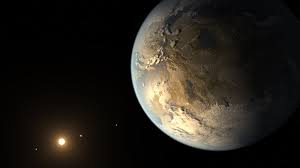As astrobiologists continue to find that the basic building blocks of life are littered throughout space, and how easy it seems for complex organic molecules, like amino acids and nucleic acids, to assemble given conditions thought to be prevalent on many worlds throughout the cosmos, the question as to why we haven’t detected life outside of the earth becomes more and more curious. Where are all the aliens? Why haven’t we seen or heard their signals from space? Could we really have been the only planet where life evolved?
A team of astrobiologists, lead by Dr. Aditya Chopra from The Australian National University (ANU) thinks there may be an answer to these difficult questions, and you may want to take a seat before I give you the news. I’m sorry to have to break it to you like this, but the aliens, well, they didn’t make it.
According to an article published by the team at ANU in the January 2016 issue of Astrobiology, life probably does arise very frequently on planets throughout the galaxy. Life is tough, in the sense that it is easy to get started in environments all over the place, but ironically it is also very brittle, in the sense that to hang on and evolve, its environment has to be very supportive. Dr. Chopra says, “Early life is fragile, so we believe it rarely evolves quickly enough to survive.”
If true, then most life that has arisen in the cosmos is dead! We’re not talking advanced civilizations that destroyed themselves with nuclear war or unleashed the robot apocalypse, we’re talking about the earliest development of life, simple cells, or possibly even porto-cells, that seemed to just be getting started then, wham, environmental catastrophe shuts them down while they’re still vulnerable, inefficient replicators, without much time to have evolved more robust survival features. If the most primitive life forms emerge often, but survive infrequently, then the evolution of very complex and intelligent life will also be very infrequent. The very low probability for survival beyond these most primitive stages is known as the Gaian Bottleneck.
The Gaian Bottleneck may be a type of filter that weeds out a lot of hopeful little worlds creating an essentially barren universe. Somehow earth made it through the Gaian Bottleneck. Earth must have had conditions not only for jump-starting life, but for providing a more stable environment that allowed further evolution of that life. If given the chance, the ANU team believes that life then begins to form feedback loops with the planet that help stabilize it, making it even more habitable for the long haul. Dr. Charley Lineweaver, also of the ANU team commented that, “Early microbial life on Venus and Mars, if there was any, failed to stabilize the rapidly changing environment. Life on Earth probably played a leading role in stabilizing the planet’s climate.”
So the next time life seems to be treating you unfair, look up at the stars and think of all the little aliens that never even had a real shot in this great big cold universe, and maybe it will help to know that you come from a long line of tough survivors.










